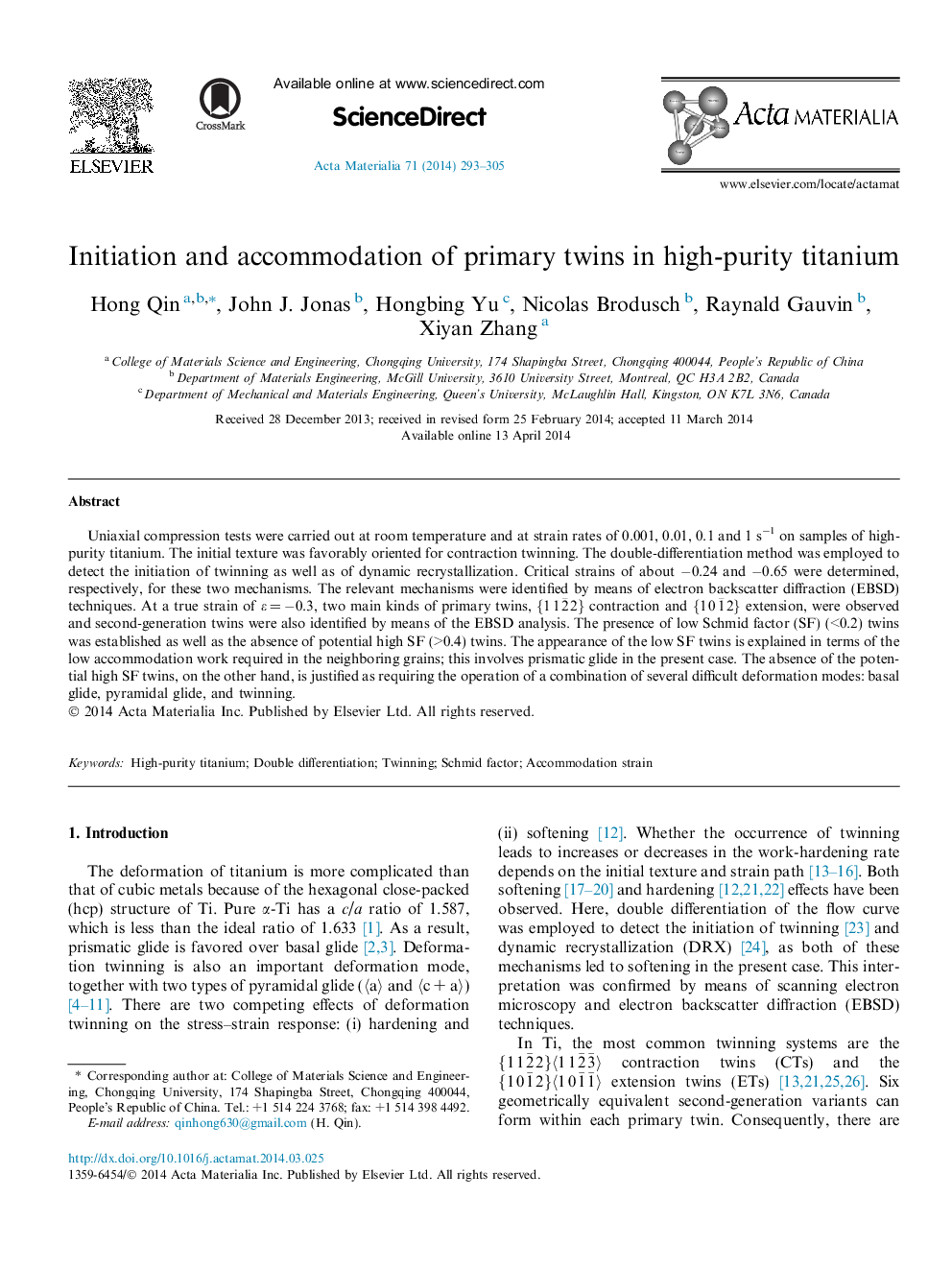| Article ID | Journal | Published Year | Pages | File Type |
|---|---|---|---|---|
| 1445707 | Acta Materialia | 2014 | 13 Pages |
Uniaxial compression tests were carried out at room temperature and at strain rates of 0.001, 0.01, 0.1 and 1 s−1 on samples of high-purity titanium. The initial texture was favorably oriented for contraction twinning. The double-differentiation method was employed to detect the initiation of twinning as well as of dynamic recrystallization. Critical strains of about −0.24 and −0.65 were determined, respectively, for these two mechanisms. The relevant mechanisms were identified by means of electron backscatter diffraction (EBSD) techniques. At a true strain of ε = −0.3, two main kinds of primary twins, {112¯2} contraction and {101¯2} extension, were observed and second-generation twins were also identified by means of the EBSD analysis. The presence of low Schmid factor (SF) (<0.2) twins was established as well as the absence of potential high SF (>0.4) twins. The appearance of the low SF twins is explained in terms of the low accommodation work required in the neighboring grains; this involves prismatic glide in the present case. The absence of the potential high SF twins, on the other hand, is justified as requiring the operation of a combination of several difficult deformation modes: basal glide, pyramidal glide, and twinning.
